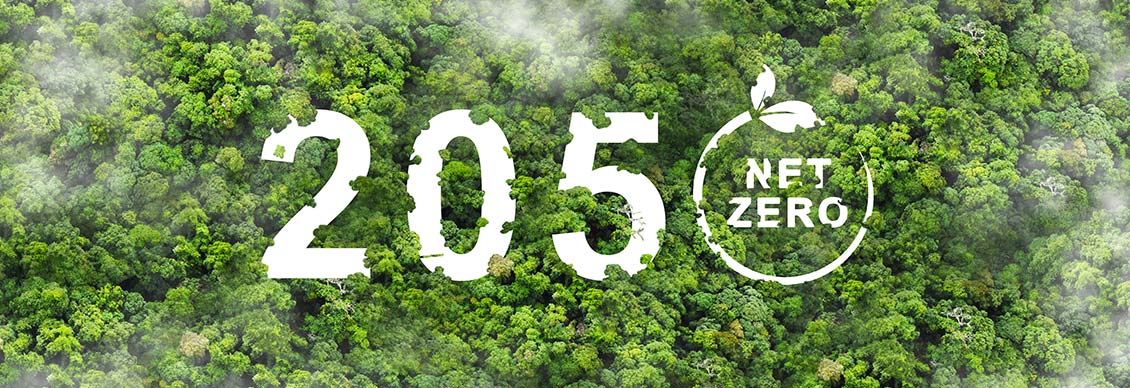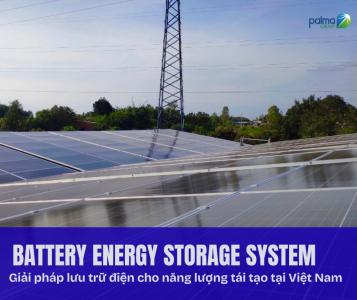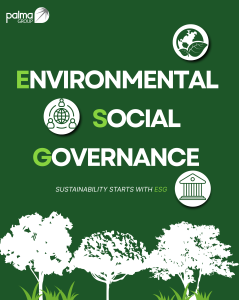News
PALMA SOLUTIONS JSC
WHAT IS NET ZERO? AND HOW TO ACHIEVE IT
The negative impacts of climate change are seriously affecting the world on a global scale, requiring the international community to take stronger, more responsible, and timely action worldwide. Governments around the world have agreed to strive for Net Zero by 2050 as part of the Paris Agreement, signed in 2014. However, making declarations is always easier than taking action and achieving practical results. In addition, there can be confusion due to the large number of related terms.
1. What is Net Zero?
Net Zero is achieved when the total amount of greenhouse gases (such as CO₂, CH₄, N₂O) emitted by human activities is balanced by the amount removed from the atmosphere through carbon removal processes. This issue not only requires reducing emissions from sources such as transportation, industrial production, and power generation, but also enhancing carbon absorption through measures like afforestation, forest conservation, and carbon capture and storage technologies. Achieving Net Zero is also equivalent to achieving “climate neutrality.”

2. Net Zero and Carbon Neutral: What’s the difference?
The definition of “Carbon Neutral” means that, in order to achieve a result of zero carbon emissions for a company, location, product, brand, or event, it is first necessary to conduct a greenhouse gas inventory, then reduce emissions as much as possible, and afterward offset the remaining emissions by an equivalent or avoidable amount. The goal of carbon neutrality is to minimize the impact of human activities on climate change and promote sustainable development. This can be achieved by purchasing a sufficient number of carbon credits to compensate for the difference.
In contrast, “Net Zero” is a much more ambitious goal, requiring organizations or businesses to reduce carbon emissions throughout the entire supply chain - from the first-tier suppliers in the value chain to the end users - an enormous effort in a world where companies do not have full control over their entire value chain.
Table 1. Comparison between Net Zero and Carbon Neutral.
3. How to Achieve Net Zero?
Several scientific studies have clearly shown that, to prevent the worst impacts of climate change and preserve a livable planet, the global temperature increase must be limited to 1.5°C above pre-industrial levels. The Paris Agreement aims to keep the rise in global temperature well below 2°C and to pursue efforts to limit it to 1.5°C. Currently, the Earth is about 1.1°C warmer than it was in the late 1800s, and emissions continue to increase. A 2021 study by the World Resources Institute (WRI) indicates that to meet the goals of the Paris Agreement, emissions need to be reduced by 45% by 2030 and reach net zero by 2050.
The article titled “The Meaning of Net Zero and How to Do It Right”, published in Nature Climate Change by the University of Oxford in December 2021, identified seven attributes required to achieve Net Zero successfully:

a. Reduce emissions from the start
The IPCC has identified more than 200 pathways to reduce carbon emissions to achieve Net Zero. The short-term, medium-term, and long-term targets for carbon reduction along these pathways differ, but companies should make efforts to significantly cut carbon emissions in the short term, rather than waiting to increase their efforts in the middle or later stages. This is because it remains uncertain whether global temperature changes can be reversed, and the greenhouse gases accumulated during earlier stages will cause consistent temperature increases.
Research has shown that each year of delay before starting to reduce emissions shortens the remaining time to reach zero emissions while keeping warming below 1.5°C by approximately two years.
In addition, the IPCC calculated carbon reduction pathways based on current environmental conditions. Therefore, if future climate change leads to forest fires, ocean acidification (which affects marine ecosystems), and other factors that cause carbon sinks to decline and reduce stored carbon, then the lack of proper carbon reduction measures in the early stages will result in loss of flexibility in responding to these challenges later on.
b. Comprehensive Emission Reduction
Unlike Net Zero, the core difference of carbon neutrality lies in the comprehensive assessment of greenhouse gas emissions. Therefore, actions to achieve this goal are not limited to increasing the use of clean energy, but also include air conditioning, engines, waste treatment methods, and all behaviors that can generate greenhouse gases.
This requires a collective effort from all sectors, including those that face difficulties in reducing carbon, such as heavy industry, construction, agriculture, aviation, and mining.
Even industries with initially low carbon emissions are required to take actions beyond reducing their own emissions. For example, banks can offer premium green loans or green investment programs.
c. Be Cautious When Using Carbon Dioxide Removal
Although humans are currently investing in and conducting research on Direct Air Carbon Capture and Storage (DACCS) technology - which captures CO₂ directly from the atmosphere and stores it underground - we still cannot predict its long-term environmental impacts after sending a large amount of CO₂ into storage layers underground.
Moreover, afforestation efforts are vulnerable to accidents such as floods or wildfires, leading to results below expectations. Therefore, reducing carbon emissions at the source should remain the top priority.
CO₂ removal methods should only be implemented - and with caution - when carbon reduction becomes no longer feasible.
d. Effective Regulation of Carbon Offsetting
Currently, carbon credits are provided by many independent organizations, each with different programs and calculation methods, resulting in a lack of standardized monitoring mechanisms.
As a result, many offset schemes are poorly designed, and external impacts from their implementation are not comprehensively considered, while the number of carbon credits issued often exceeds realistic estimates.
At this stage, corporations should carefully examine the content and practical outcomes of each carbon offset program to ensure that the funds spent on purchasing carbon credits are truly invested in impactful climate actions.
e. A Just Transition to Net Zero
Many wealthy nations today have undergone high-pollution, low-cost industrialization. However, if they treat developing economies equally during the Net Zero transition, they may unintentionally create inequality between nations and increase poverty even while protecting the environment.
Therefore, distinct Net Zero pathways should be designed to suit each country’s specific context.
Investments in resource-poor countries that use clean energy and low-pollution development can also generate carbon credits.
Hence, corporations can either purchase appropriate carbon credits or establish low-carbon business models in developing nations.
f. Socio-ecological Sustainability
Today, climate change is the most urgent issue to address, but other environmental and social aspects must also be considered while mitigating global warming.
For instance, farmers should not be deprived of their farmland for exotic tree plantations, as such actions may harm local livelihoods and even destroy ecosystems.
A better approach is to bring together local communities, authorities, and stakeholder groups to conduct detailed assessments and provide fair compensation or alternative employment opportunities for those affected.
g. New Economic Opportunities
Many people believe that Net Zero will harm national economies and corporate profits, as achieving it is a challenging process involving industrial upgrades and large-scale transitions.
However, from a national perspective, reducing subsidies and compensation for high-emission industries (e.g., petrochemical fuels) can foster the growth of new and alternative industries such as solar energy, wind power, and energy storage, thereby creating a new economic model that is less polluting and more value-added.
07/11/2025 12:38:33
News other
Battery Energy Storage Systems (BESS) help Vietnam optimize renewable energy, stabilize the power grid, and accelerate the clean energy transition.
Explore the components, operating principles, battery technologies, and sustainable lifecycle of Battery Energy Storage Systems (BESS) – a key solution toward Net Zero.
 PALMA SOLUTIONS JSC
PALMA SOLUTIONS JSC




![[PALMA x NOVALAND] WORKSHOP ON MAINTENANCE AND SERVICING OF SOLAR LANDSCAPE LIGHT PLL-30 AT NOVA HILLS – MUI NE [PALMA x NOVALAND] WORKSHOP ON MAINTENANCE AND SERVICING OF SOLAR LANDSCAPE LIGHT PLL-30 AT NOVA HILLS – MUI NE](https://palma.com.vn/upload/z3634653067260_15cb1f4d62b14f3a684fdf4ee9de4870_-11-08-2022-13-55-36.jpg)





_-24-10-2021-21-55-01.png)
_-21-04-2022-13-38-01.png)
